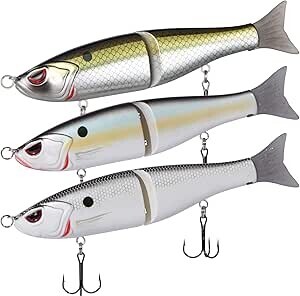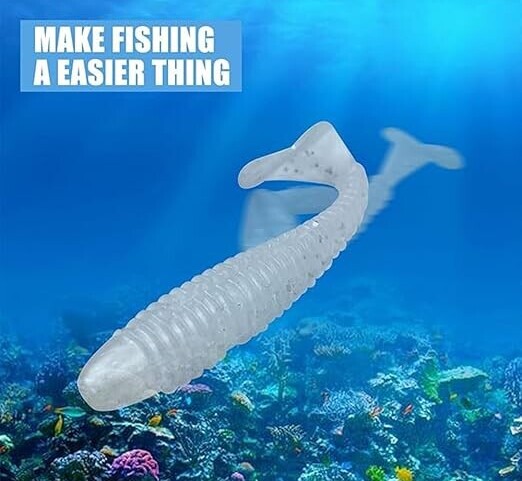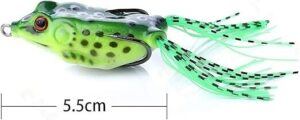How To Use A Swim Bait To Catch Big Bass.
Swim baits are game-changers when it comes to luring big bass. They mimic real fish movements, making them incredibly appealing to predator fish. Understanding what swim baits are and why they’re a go-to choice can make all the difference out on the water.
There are two main types of swim baits: hard and soft.
Hard baits are typically more durable and often come with jointed segments that create realistic swimming actions.
On the flip side, soft swim baits are more lifelike in texture and can be rigged in various ways for different presentations.
When it comes to picking a swim bait, size and color matter a lot. Bigger baits tend to attract bigger bass, but matching hatch size, which means using a bait size similar to the local forage, often works best. Color selection is about matching the environment: natural hues for clear waters, brighter colors for murky conditions.
Equipping yourself with the right knowledge about swim baits gives you the edge not just in choosing the baits but in maximizing your chances of catching that trophy bass. It’s all about understanding the subtle details that make these lures so effective.
Setting Up for Success: Choosing the Right Gear
Getting your gear right is crucial when you plan on using swim baits. The right rod and reel combo can significantly enhance your casting and retrieval, making a big difference in your overall success rate.
For swim bait fishing, a medium-heavy to heavy rod is often the best choice. It provides the backbone needed to handle large baits and the big bass you’re hoping to catch. A fast action tip gives better control and sensitivity, crucial when you need to feel those subtle bites.
Choosing the right reel is just as important. Look for a baitcasting reel with a good line capacity and a smooth drag system. This ensures you have the power to reel in bigger fish without worrying about the line snapping or the reel jamming up.
Your line choice impacts the entire setup. Braided line around 30-60 lb test is common because of its strength and sensitivity. Consider a fluorocarbon leader for its invisibility underwater, which can trick wary bass into striking.
Don’t forget about the accessories. Hooks, sinkers, and swivels all play a role in how your swim bait performs. Make sure they’re compatible with the bait and suit the fishing conditions you’ve scoped out.
Mastering the Technique: How to Cast and Retrieve for Big Bass
Casting and retrieving techniques can make or break your day on the water. Effective casting ensures that your swim bait reaches the right spot, while a proper retrieve mimics a lifelike motion that bass find irresistible.
Start with a smooth, controlled cast, aiming for areas where bass are likely to hide or hunt. Practice makes perfect in getting that lure to land quietly without spooking the fish. Whether you’re casting to structure or open water, accuracy is key.
When it comes to retrieval, variety keeps things interesting for the bass. A steady, slow retrieve often works wonders, but sometimes a stop-and-go or erratic retrieve can trigger a strike from curious or cautious fish.
Keeping an eye on your lure as it moves through the water can help you detect subtle changes that indicate a bass following or striking. This awareness cues you to adjust your speed or action for a more enticing presentation.
Recognizing bass behavior is essential. On warmer days, bass might be more aggressive, responding to faster retrievals. On cooler days, it’s often best to slow down and opt for more deliberate movements.
Optimal Locations to Fish Swim Baits for Trophy Bass
Finding the right spot is half the battle when trying to catch big bass with swim baits. Bass love structure, so areas with submerged logs, weed beds, and underwater ledges are great places to start. These spots provide cover and ambush points, making them ideal for casting your bait.
Seasonality plays a big role too. In the spring, bass often head to shallow waters for spawning, making it a prime time for swim bait fishing. During the hotter summer months, they might move deeper to avoid the heat, so you’ll want to adjust your focus accordingly.
Weather conditions give you hints about where bass might be lurking. Overcast days often see more active bass who venture out from their covers, while bright sunny days will have them sticking closer to shadowed areas and deeper structures.
Water clarity can’t be overlooked. In clear waters, natural-colored baits work well, as they blend in naturally and don’t spook the fish. In murky waters, brighter baits are the way to go since they stand out better amid all the sediment.
Knowing these factors helps you position yourself right and understand where to cast. Adapting to the environment according to what you observe on-site really maximizes your chances of success.
Expert Tips and Tricks for Landing that Trophy Bass
Experimenting with swim bait modifications can sometimes turn the tide in your favor. Consider altering the bait’s weight or adding rattles to see if it attracts more attention. Small changes like these can make your swim bait stand out and provoke those big strikes.
Developing an eye for water conditions and bass behavior lets you tweak strategies on the go. Watch how the fish react to your bait. Sometimes a subtle tweak like adjusting the retrieval speed or changing the bait’s color can lead to better outcomes.
Patience is your best friend when it comes to fishing for big bass. Many seasoned anglers will tell you that catching trophy fish isn’t just about skills—it’s a waiting game. Spend substantial time at chosen spots, especially if you have evidence of big bass activity.
Don’t be afraid to move if you’re not getting bites. Combining patience with smart movement helps optimize your time on the water. Hop between spots you’ve pre-identified as potential hotbeds for activity, rather than sticking it out at one place too long.
Building a mindset focused on learning and adapting continuously sharpens your skillset. Keep notes of what works and what doesn’t. Developing your own data bank of personal tips tailored to specific fishing environments and conditions is invaluable.





